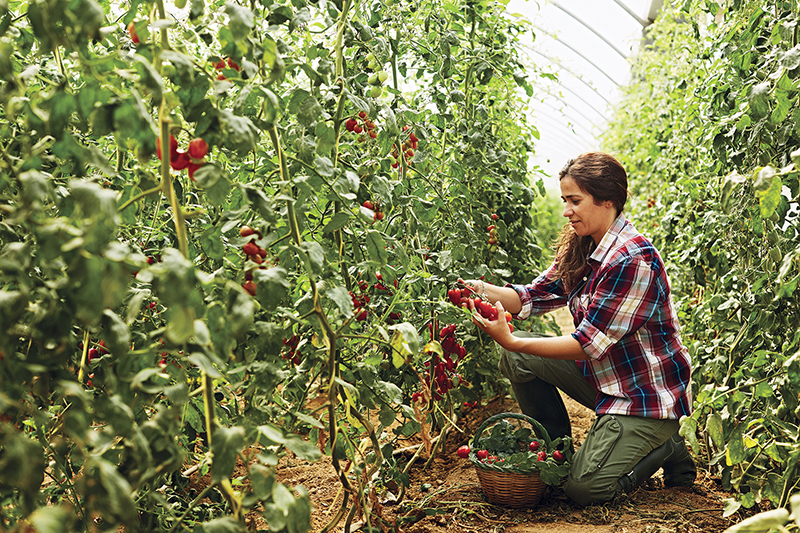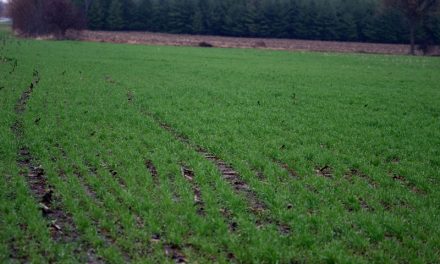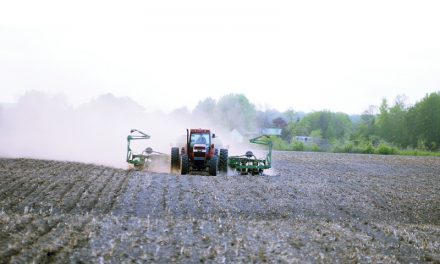By Tom Manley
AgriNews Contributor
Farming is sometimes accused of contributing to climate change by releasing excessive amounts of carbon into the atmosphere, or in technical terms, creating a net positive contribution to carbon release.
The real situation is much more complicated, and one could find many examples of farming systems that provide a net positive sequestration of carbon. Nevertheless, the carbon counters point to the significant carbon emitters in specific sections of the agri-food system. The issue is not just about farming, but all the carbon emissions at various stages of the agri-food system from field to fork.
The fundamental conflict occurs when a particular agri-food system is designed using an extraction model: deforestation for agriculture, short rotation commodity farming, significant off-farm inputs, segregation of livestock from crop production, long distance supply chains, and massive transportation systems. Therefore, the farming community is fighting a losing public relations battle when trying to defend, tweak, or green wash an agri-food system that is designed for resource extraction and carbon release.
What if we designed an agri-food system with the intention of net carbon sequestration from field to fork? That system could include things like a net increase year-over-year of the carbon content of the soil (usually found in soil organic matter), a reduction to an absolute minimum of off-farm inputs, an integration of animals and crops in the same farming operation, multi-crop long-term rotations, cover crops, the preservation of forests in the farming system, short, localized supply chains, farming for local populations, and minimal transportation.
Such a system exists. It is called regenerative agriculture. The Regenerative Organic Certified™ program claims to “Farm like the world depends on it.” (https://regenorganic.org/) “Regenerative Organic Certified™ is a revolutionary new certification for food, textiles, and personal care ingredients. ROC™ farms and products meet the highest standards in the world for soil health, animal welfare, and farmworker fairness.”
Let’s focus on one element – organic matter in the soil, which consists largely of carbon. There are many reports around the world to confirm the continuing drop in the organic matter levels in farm soil. In 2018, “Country Guide” reported the same drastic trend in almost all counties in Ontario; “for example, in Essex County, the soil report in 1949 said that 70 per cent of the farms had greater than six per cent organic matter, and the average during the past 15 years is 3.5 per cent.”
Where has that carbon gone? Clearly, the carbon is in the atmosphere.
The “United States Geological Survey” describes the concept of “carbon farming”, a farming system designed to be net sequestration of carbon while also designed to be profitable. The benefits include an improvement in soil health, increased forage and crop yields, an increase in the water holding capacity, a reduction in the total landscape demand for water, carbon sequestration, reduction of atmospheric greenhouse gases (GHG) and diversion of urban and agricultural organic waste from methane-producing anaerobic disposal in landfills and manure lagoons, and from burning.
A “Crop Talk” article from OMAFRA also presents the critical benefits of organic matter in the soil, claiming that it is the most important component of soil. Any initiative to increase organic matter in the soil addresses almost any soil-related problem: soil structure, poor water infiltration or retention, low soil nutrient supply, climate change, and greenhouse gases.
The reduction in soil organic matter is the result of several changes in the design of modern farming systems: short crop rotations, the omission of cover crops and under seeding, the removal of straw from the field, the replacement of perennials with annual crops, the segregation of livestock from crop production, and the use of chemical inputs that degrade soil life and carbon retention.
Fixing organic soil matter is not about tweaking an extractive production system; for example in 2015, the Food and Agriculture Organization of the United Nations reported some increases in soil organic carbon in North America due to less intensive agriculture and reduced tillage intensity, but such effects of reduced tillage differ across sub-regions. In the moister soils of central and Eastern Canada, conversion to no-till practices did not increase soil organic carbon.
The ecological farmer designs an integrated farming system that recognizes that the farm’s greatest ally is carbon in the form of organic matter in the soil. The farmer builds long crop rotations, uses extensive cover crops, and returns composted manure to the soil (preferably from on-farm livestock). The result is a steady growth in on the organic matter level of the soil, reaching the range of 7-9 per cent.
Consequently, the ecological farmer achieves a net carbon sequestration with a beneficial contribution in addressing climate change. To the farmer’ sbenefit, the farm sees a significant reduction in input costs, steady profitable yields, better soil structure, improved mitigation of the effects of both drought and excessive rain, reduced horsepower requirements in soil tillage, reduction compaction, and better disease resistance.
For 35 years, the Farming Systems Trial (FST) at the Rodale Institute demonstrates that a higher soil organic matter (SOM) content delivers higher nutrient- and water-supplying potential to crops, resulting in greater yields and especially greater drought tolerance.













